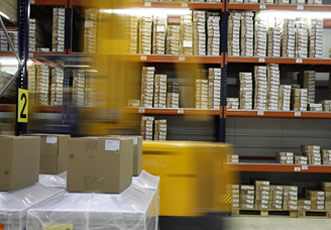Just in time - manufacturing advice

It is suggested that 71% of senior manufacturing executives have used some form of the just-in-time manufacturing method in their processes. Just-in-time (JIT) is a well-known concept in business and it doesn’t show any signs of declining soon. But how can businesses successfully manage a system based on just-in-time? Here, Andy Owen, Managing Director of electric tug specialist MasterMover, gives some advice.
The concept of just-in-time was developed in Japan in the 1960s and 70s. The concept is that a business holds no stock and relies on deliveries of raw materials and components to arrive just in time to manufacture and fulfil a customer order. These deliveries arrive on the factory floor when required. This approach means that stock does not build up in the warehouse, which saves space and reduces the amount of capital held in the stock. However, it does mean that there is high pressure on manufacturers to deliver the stock quickly, and on plant managers to ensure there are no delays.
To successfully manage a just-in-time system, it is important for businesses to follow key processes. M. Sepheri, a JIT expert, published a methodology for businesses to follow. Sepheri considered housekeeping a top priority. He said that they should consider the physical organisation and discipline of their plant and that it should have a compact layout.
To maintain this orderly process, firms need to ensure that all of the steps in getting the product from the factory to the customer are efficient and do not waste any time or resources. A key step in this process is how businesses physically move goods. Traditionally, companies use forklift trucks or high levels of manual labour to move things. However, this is a slow process that can hinder the JIT methodology.
Traditional equipment such as cranes and forklifts are fine for use at the periphery of a factory, but struggle as you get closer to the production lines, where narrower walkways can post a safety risk to pedestrians. This means that more manual labour is required and is not great if you're trying to roll out a JIT system. Instead, plant managers can use electric tugs controlled by a pedestrian to move heavier loads safely and much more quickly.
Congested walkways also delay workers' movements if they have to wait for their path to clear or for a trained crane or fork lift operator to move the product. MasterMover’s range of electric tugs offer complete control and manoeuvrability. They can move up to 30,000kg and you don't need a forklift licence to use one safely.
By reducing safety hazards and reducing the amount of manual handling that workers do, businesses can reduce the potential of injury and subsequent sick leave. This allows the company to reduce labour costs and improves the company’s safety record.
By following these processes and using electric tugs to move their products, companies can maximise the efficiency and speed of their production line, to create an effective just-in-time process.
Similar articles
More from MasterMover
- A tug for all occasions 15th June 2017
- MasterMover signs partnership with offshore lifting specialist 9th May 2017
- Efficiency improvements to be made for porters 28th March 2017
- Are you wasting your time? 3rd March 2017












Write a comment
No comments